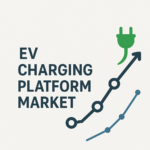Commercial Vehicle Market Analysis and Forecast
The Commercial Vehicle Market is witnessing significant transformation driven by evolving global logistics, urbanization trends, emission regulations, and automation technologies. As economies recover post-pandemic, demand for goods transportation, e-commerce distribution, and last-mile delivery has accelerated the need for robust commercial vehicle solutions. From light commercial vehicles (LCVs) to heavy-duty trucks and electric buses, the market is redefining the future of freight and public transport systems worldwide.
Global Significance and Emerging Needs
The commercial vehicle market is a cornerstone of global economic activity. Commercial fleets form the backbone of critical sectors such as construction, mining, logistics, and public transportation. With rapid urban development and industrial expansion across Asia-Pacific, Latin America, and parts of Africa, the need for agile, fuel-efficient, and environmentally compliant commercial vehicles has surged. Electrification, smart mobility, and digital logistics are reshaping fleet procurement priorities and operational strategies across developed and emerging markets alike.
Countries are also implementing stricter emission norms (e.g., Euro VI, BS-VI), encouraging OEMs to invest in alternative fuel technologies like CNG, LNG, hydrogen fuel cells, and electric drivetrains. Additionally, infrastructure growth, rise in e-commerce, and increased intercity freight demand continue to drive both medium-duty and heavy-duty commercial vehicle sales.
Key Developments in Diagnostics, Technology, and Electrification
Technological advancements are at the forefront of market evolution. Major commercial vehicle OEMs are integrating AI-based predictive diagnostics, real-time fleet telematics, and ADAS (Advanced Driver Assistance Systems) to enhance safety, fuel efficiency, and operational uptime.
Electric Commercial Vehicles: EV adoption is gaining traction with fleet operators investing in battery-electric vans, buses, and trucks. Tesla, Volvo, Daimler, and BYD are expanding electric commercial lineups, targeting both city logistics and long-haul segments.
Connected Fleet Platforms: IoT-enabled fleet management platforms now offer insights into driver behavior, route optimization, maintenance scheduling, and emissions monitoring.
Modular and Autonomous Design: The shift toward modular platforms, autonomous delivery pods, and driverless trucks is gradually moving from prototype to early deployment stages in logistics parks and urban pilot zones.
Investment Opportunities and Market Growth
The commercial vehicle market presents lucrative investment avenues across manufacturing, battery technologies, mobility services, and aftermarket services. Global fleet electrification commitments and government incentives are attracting venture capital and private equity into EV startups, hydrogen ecosystem players, and component suppliers (e.g., battery packs, power electronics).
Mergers and Acquisitions: Strategic M&A activities are reshaping the competitive landscape. Recent deals focus on consolidating telematics providers, enhancing EV production capabilities, and expanding global footprints into high-growth regions.
Emerging Markets: India, Indonesia, Vietnam, Brazil, and Sub-Saharan Africa are witnessing a surge in demand for durable and cost-efficient vehicles for logistics, mining, and public mobility.
Fleet Modernization Programs: Governments and large enterprises are investing in low-emission vehicle programs, creating robust demand for clean, connected, and compliant vehicle technologies.
Recent Market Trends
Recent trends influencing the commercial vehicle market include sustainability mandates, AI integration, modular vehicle design, and fleet electrification. These trends are shaping product development, procurement patterns, and long-term fleet strategies globally.
Sustainability and Emission Compliance: OEMs are aggressively investing in green technologies to meet carbon neutrality targets and regional emission mandates.
AI & Predictive Analytics: AI-enabled fleet analytics platforms are optimizing vehicle health monitoring, driver performance, and route efficiencies, reducing total cost of ownership.
Urban Logistics Solutions: Demand for compact, agile, and low-emission delivery vans is growing in response to last-mile delivery needs, especially in dense urban environments.
Modular Body Designs: Flexible chassis architectures that accommodate multiple commercial uses are allowing faster customization and reducing production overheads.
Challenges Facing the Market
Despite strong growth potential, the market faces notable challenges:
High EV Costs: The initial cost of electric commercial vehicles remains a barrier for small and medium fleet operators, despite long-term operational savings.
Charging Infrastructure: Inadequate public and depot-based charging stations hampers EV adoption, especially in rural or high-traffic logistics corridors.
Supply Chain Disruptions: Semiconductor shortages and material price volatility continue to impact production schedules and delivery timelines.
Driver Shortages: Global driver scarcity, especially in long-haul trucking, is affecting fleet productivity and turnover rates.
FAQs – Commercial Vehicle Market
1. What segments are included in the commercial vehicle market?
The market typically includes light commercial vehicles (LCVs), medium-duty vehicles, heavy-duty trucks, and buses used for logistics, public transport, construction, and specialty applications.
2. What is driving the demand for electric commercial vehicles?
Regulatory pressure to reduce emissions, fuel cost savings, and government subsidies are the primary factors boosting electric commercial vehicle demand.
3. Which regions are experiencing the fastest commercial vehicle growth?
Asia-Pacific (especially India and China), Latin America, and Africa are showing rapid market growth due to infrastructure development and logistics demand.
4. What role does AI play in commercial vehicle operations?
AI is used in predictive maintenance, route optimization, driver behavior monitoring, and autonomous driving technologies to enhance fleet efficiency and safety.
5. What are the challenges in adopting commercial EVs?
High upfront cost, limited charging infrastructure, and battery performance in heavy-duty cycles are key challenges in EV adoption.
Conclusion
The commercial vehicle market is at a pivotal juncture, poised for innovation-led growth in response to global economic demands, environmental mandates, and technological evolution. Electrification, digital fleet intelligence, and automation are transforming the way goods and people move, offering substantial opportunities for stakeholders across OEMs, suppliers, logistics firms, and technology providers. While challenges persist, strategic investments, policy support, and infrastructure expansion will play a critical role in unlocking the market’s full potential in the years ahead.
